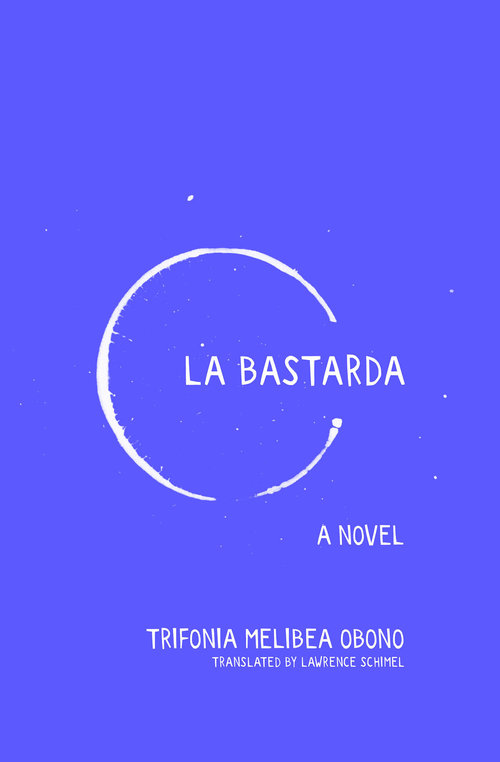A Review of Trifonia Melibea Obono’s La Bastarda | James J. Davis
I was interested in reviewing La Bastarda primarily because it was written by a writer, Trifonia Melibea Obono, from Equatorial Guinea with whom I was not familiar. Equatorial Guinea is often referred to as the only Sub-Saharan African country with Spanish as its official language. I assumed that the text was in Spanish and that it was a non-fictional treatise on the cultural “bastardization” of Equatorial Guinea brought on by Spanish colonization and the need to reconstruct a national identity. Nevertheless, I learned that my assumptions were severely incorrect. La Bastarda was described as “the first novel by an Equatorial Guinean woman to be translated into English…”. But the first novel written and published by an Equatorial Guinean woman, María Nsue Angüe, was Ekomo (1985). I immediately wondered if La Bastarda would demand the critical attention that has been given to Ekomo over the years.
My first reading of La Bastarda was to chomp through it as a novel. After finishing it, I asked myself a few basic questions. “Did I enjoy it?” “Did it keep me turning the pages?” “Was I enlightened in any way? All three questions were answered with “Yes”. At the risk of sharing too much about the plot, I disclose what the publishers wrote about the novel on its back cover:
‘La Bastarda is the story of the orphaned teen who lives under the watchful eye of her grandmother and dreams of finding her estranged father. Forbidden to seek him out, she enlists the help of other outcasts: her gay uncle and a gang of ‘mysterious’ girls. Drawn into their illicit trysts, Okomo falls in love with their leader and rebels against the rigid norms of Fang culture.’
In seven unnumbered chapters/episodes, the protagonist/narrator, Okomo, walks the reader through her life in a linear narrative, which is interrupted only when she occasionally fills the reader in on significant past occurrences or historical facts or people.
The novella is as much about traditional Fang culture as it is about Okomo’s quest for self-discovery. She is controlled by the constraints placed on women in many cultures. Okomo’s grandfather, Osá, and her grandmother, Adá, embody the elder gatekeepers of Fang culture. They constantly remind Okomo that she should not violate Fang traditional practices and hegemony. Throughout the novel, there is some iteration of “your opinion does not count, your elders are always right”. In spite of those warnings, Okomo disobeys her elders and seeks out her father. She further “violates” Fang culture by acting on her sexual desires and becomes sexually involved with the young women of the so-called “Indecency Club”. She declared: “I felt sexually free”. When Okomo is outed to her grandparents by the villagers who pronounced that “Your granddaughter is a woman-man”, her grandmother asks what that means. Okomo’s grandfather, steps in and asserts “Silence! The woman-man does not exist in Fang tradition”. In the end, Okomo becomes a cultural and social outcast and is forced to live outside of the home community. She goes to live in the forest with her Uncle Marcelo, a man-woman and other members of the “indecency” community. The protagonist-narrator ends the story with a poignant statement: “The forest was the only refuge for those who had no place in Fang tradition, like me. I’m a bastarda, daughter of an unmarried Fang woman. I am a bastarda, a lesbian”.
Because La Bastarda is only eighty-eight pages long, one could easily place it in the short story genre. Obono economizes in words but not in important facts and details. The reader is always aware of what is happening. He must keep in mind that the novella is in translation. As a reader of the Spanish language, I often wanted to compare the translation to the original language while reading the novella, although I was quite convinced that the translation was as loyal to the original as possible.
This novella presents myriad possibilities for future analyses and interpretations. With the novella, Obono follows in the footsteps of many Equatorial Guinean writers who, as Marvin A. Lewis pointed out in his An Introduction to the Literature of Equatorial Guinea, “delineate a conflict between two cultural traditions and an inability to resolve the implicit problem either at a national, an ethnic, or an individual level”. La Bastarda should be read and studied with Lewis’ observations in mind. Okomo, at the end of the book partially resolves her personal conflict, but she does not resolve the larger cultural conflicts of Equatorial Guinea. Many of the issues that warrant future study are outlined in what might be called a special bonus to the story. There is ten-page “Afterword” by African historian, Abosede George. To get the most out of La Bastarda, I advise the reader not to read first the “Afterword”, which offers some valuable insights for interpretation and analyses.
The novelty of La Bastarda is almost exclusively its theme of female homosexuality. I agree with Cheryl Clarke’s one-line assessment, which appears on the front cover of Obono’s work, that it is “an invaluable contribution to lesbian and gay literary culture”. La Bastarda should take its special place in African literature in general and in Equatorial Guinean literature produced by women in particular.
References:
Lewis, Marvin A. (2007). An Introduction to the Literature of Equatorial Guinea: Between Colonialism and Dictatorship. Columbia: University of Missouri Press
Nsue Angüe, María (1985). Ekomo. Madrid: U.N.E.D
Obono, Trifonia Melibea (2016). La Bastarda. Editorial Flores Raras
Obono, Trifonia Melibea (2018). La Bastarda. New York: The Feminist Press
_______________________
James J. Davis, Ph.D., is Professor of Spanish and Associate Dean for the Humanities at Howard University, Washington, DC.



